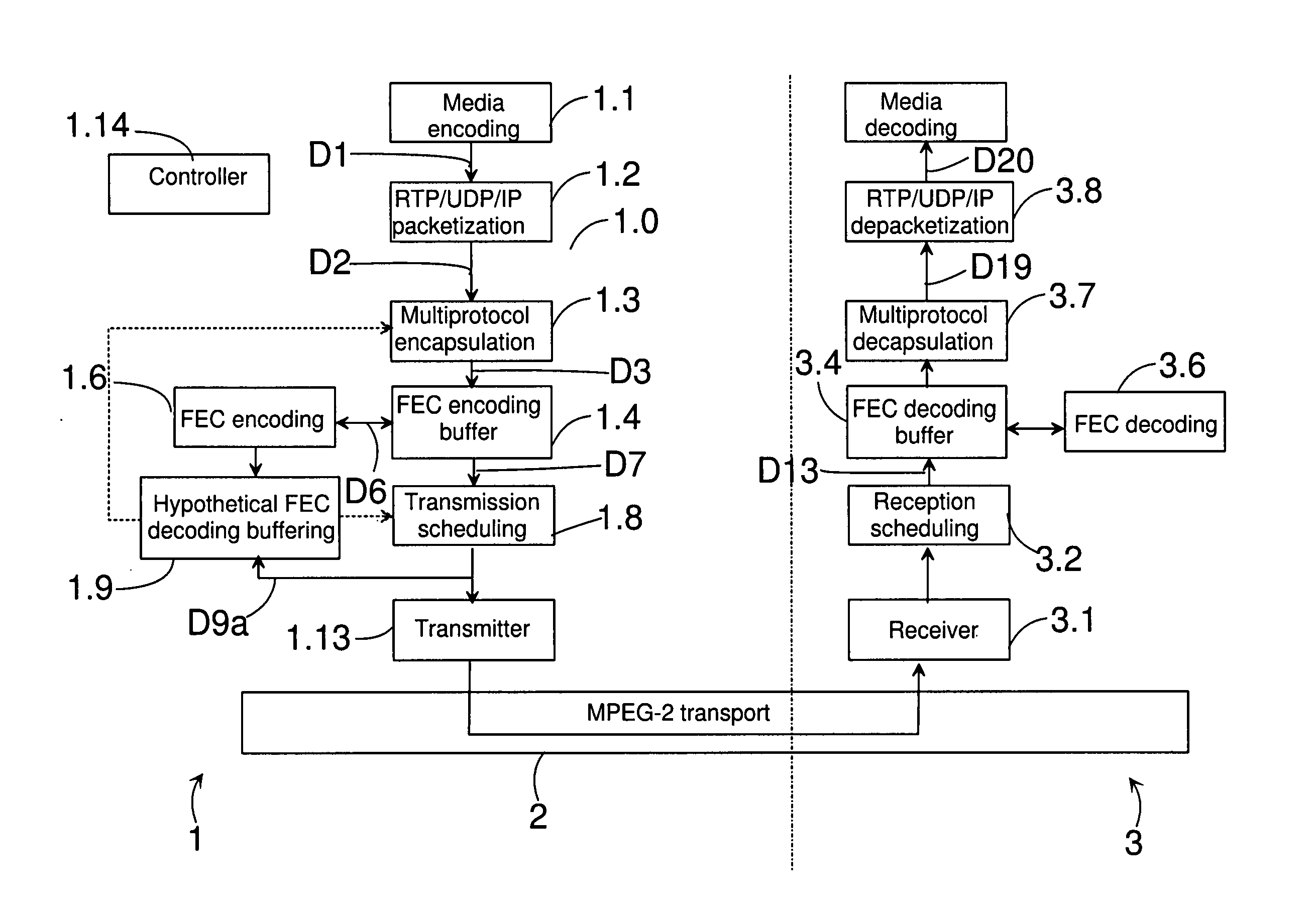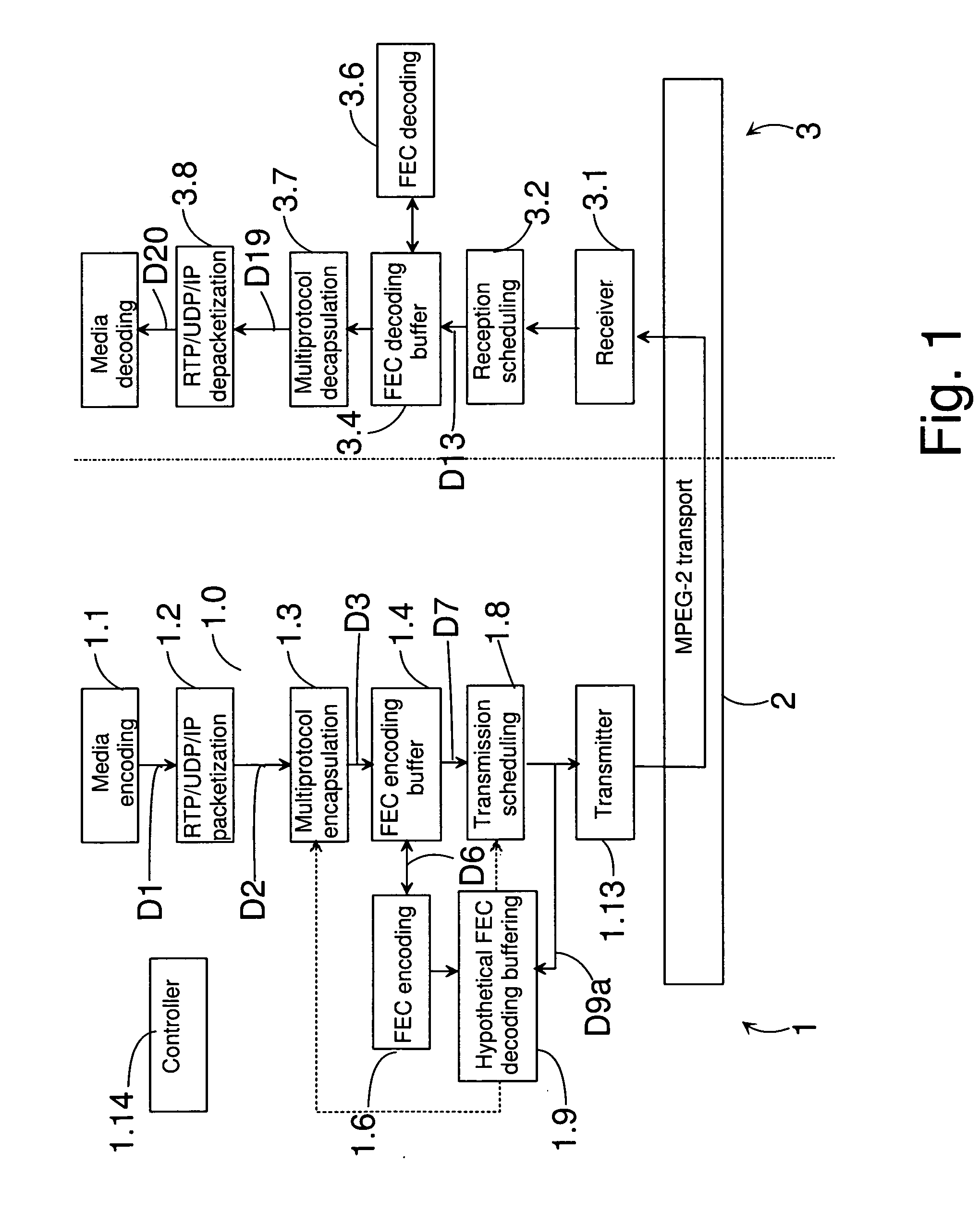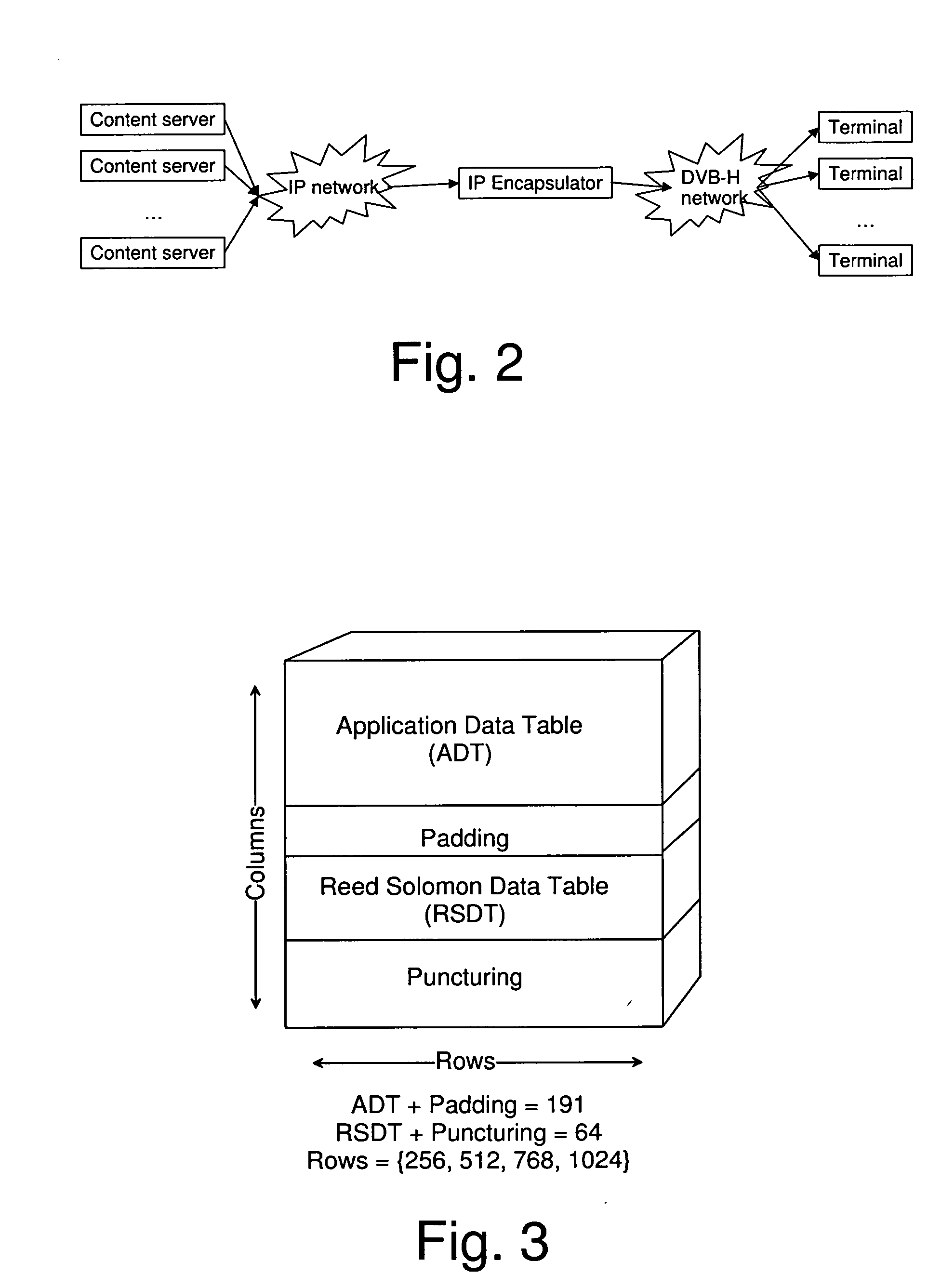Buffering in streaming delivery
a streaming and buffering technology, applied in the field of buffering packets of media streams, can solve the problems of packet loss, inability to guarantee the compatibility of the buffer model of the media decoder, packet loss,
- Summary
- Abstract
- Description
- Claims
- Application Information
AI Technical Summary
Benefits of technology
Problems solved by technology
Method used
Image
Examples
Embodiment Construction
[0138] In the following a system according to an example embodiment of the present invention is described in more detail with reference to FIGS. 1 and 6.
[0139] The system of FIG. 1 comprises a transmitting device 1, a transmission channel 2 and a receiving device 3. The transmitting device 1 can be e.g. a server, a wireless communication device, a personal computer etc. The receiving device 3 can be e.g. a wireless communication device, a personal computer, a TV etc.
[0140] The transmitting device 1 comprises a stream generator 1.0 for forming transport streams 702 from one or more DVB service 703 (containing media components or other IP streams). In this embodiment the stream generator 1.0 comprises an encoder 1.1 for encoding the media information when necessary, an RTP / UDP / IP packetizer 1.2, a multiprotocol encapsulator 1.3, an FEC encoding buffer 1.4, an FEC encoder block 1.6, and a transmission scheduling block 1.8. The encoder 1.1 creates a data flow D1, which contains an enc...
PUM
 Login to View More
Login to View More Abstract
Description
Claims
Application Information
 Login to View More
Login to View More - R&D
- Intellectual Property
- Life Sciences
- Materials
- Tech Scout
- Unparalleled Data Quality
- Higher Quality Content
- 60% Fewer Hallucinations
Browse by: Latest US Patents, China's latest patents, Technical Efficacy Thesaurus, Application Domain, Technology Topic, Popular Technical Reports.
© 2025 PatSnap. All rights reserved.Legal|Privacy policy|Modern Slavery Act Transparency Statement|Sitemap|About US| Contact US: help@patsnap.com



